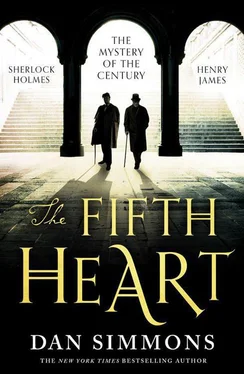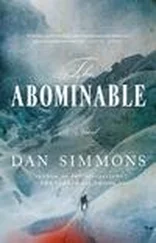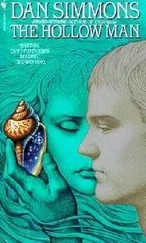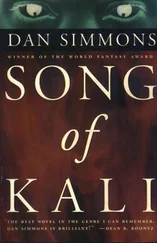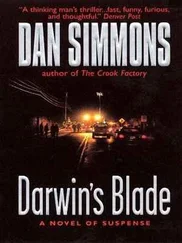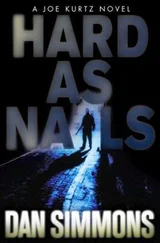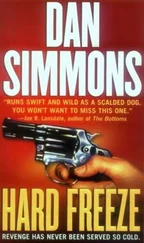But Holmes knew that there was more to the story. There had been many attractive young women and men on the ship coming over from France—the men and women often walking the promenade deck arm-in-arm, men with men, women with women.
The detective didn’t know whether James played whist or poker or bridge or any other card game where concealment was a great part of the game, but he knew that James’s impassive countenance would be an asset in such a competition. He showed little reaction, even to surprising statements or revelations. But once, unaware that Holmes was even looking his way, Henry James’s gaze had paused for no more than a second on two loud, laughing, carefree young American men, walking arm-in-arm along the deck in the way American men do so freely, and Holmes caught the complex flicker of reactions in James’s gaze: envy, wistfulness, longing, and—again—that vague hunger. The hunger had not seemed primarily sexual in nature to Holmes’s trained eye but it was most certainly an emotional reaction.
Holmes didn’t care about this fact, only that it was James’s deepest secret—that and some hidden shame about his health and back pains and relationship to his older brother William—and what made Holmes care even less was that it could not have any direct bearing on either the serious business that had brought the detective to America or on this odd little case of Clover Adams’s death.
* * *
After far too many suburban stops, the train from Washington finally pulled into New York’s Grand Central Depot at the junction of 42nd Street and Park Avenue. This three-story Victorian pile was not the new six-story “Grand Central Station” that both Holmes and James would see after the turn of the century, much less the “Grand Central Terminal” that would stand at the same spot from 1913 on for a century into the future.
This “Grand Central Depot”, Holmes could see, was a hodge-podge wedding-cake of a place with dark portals opening for more rails that would allow a few horse-drawn trains to continue toward downtown Manhattan and oversized signs for the NEW YORK AND HARLEM, NEW YORK AND NEW HAVEN, and NEW YORK AND HUDSON RIVER lines.
Holmes’s man, obviously familiar with the maze of connections here, hurried out of the stopped carriage, up flights of stairs, across a crowded open space, and outside, where he ran to catch a horse-drawn trolley headed down Park Avenue. There was nothing Holmes could do but run even harder—a solid sprint with his side whiskers flying and one hand holding his homburg in place—and leap onto the trolley at the last second.
If his prey looked back, he would be most obvious. But Holmes could see that the man he was following had already settled into a seat far forward on the trolley and was paying no attention to anything but the newspaper he’d opened in front of him.
Holmes knew that his man belonged to several rather elite (for Americans) clubs, including two where he kept a room—the Union Club at 69th Street and Park Avenue and the Century Club at 42 East 15th Street. The man also had a permanent room at the Brunswick Hotel at Madison Square at Fifth Avenue and 25th Street.
Holmes knew that the Union Club was not the immediate destination, because his target stayed on the slow trolley as the horses took it further south on Park Avenue. The Union Club’s 69th St. and Park Avenue address obviously would mean that Holmes’s man would have gone north from Grand Central Terminus at 42nd Street. The same applied to his quarry’s rooms at the Century Club, since that elite institution had recently moved to 7 West 43rd Street, which would also have required a turn north from the terminal.
If the man he was following was heading toward the Brunswick Hotel—where Holmes knew he kept a permanent room—he should get off the trolley no further south than 25th Street, since the Brunswick was two blocks east where Fifth Avenue crossed 25th St.
But the man, hunched over slightly and seeming lost in the afternoon edition of the New York paper he’d picked up at Grand Central, stayed on the trolley past both the 25th and then 23rd Street stops. So the destination wasn’t the Union Club, the Century Club, or his much-frequented Brunswick Hotel.
At Union Square, the trolley took the slight jog to avoid the transition from Park Avenue to Broadway and followed 4th Avenue for five blocks to Lafayette Street. Holmes’s man showed no interest in getting off anywhere along these blocks just above and below Canal Street. When Lafayette Street merged with Centre Street, and City Hall came within view, the man stood on the running board to hop off the trolley. Holmes let the horses plod on another half block before he also jumped off and doubled back through the throng of pedestrians, keeping his target’s head and shoulders in view at all times.
Holmes immediately saw their destination and was a little surprised. He’d imagined that if they were going to cross the East River, his quarry would take one of the ferries. The fact that they weren’t going to a ferry landing pleased Holmes; he’d been in New York City several times since the Brooklyn Bridge was finished a decade earlier in 1883, but he’d never had reason or opportunity to cross it before. As with Henry James a week and a half earlier, a ferry had always seemed a more reasonable way to make the switch of railway connections from Manhattan to Staten Island or Brooklyn.
He watched his man pay his toll at the ornamental iron tollbooth and climb the broad iron stairway to the waiting platform. Half a dozen heads behind him in the queue, Holmes paid his nickel and joined the crowd on the platform. The train cars crossing the bridge followed their course in the center of the span with the pedestrian walkway above it and the roadbeds for carriages and other conveyances running along on either side, and Holmes knew that the trains made no stops on the bridge. Thus he felt perfectly comfortable taking a seat and relaxing in the rear of the car his man had entered, his back to his quarry. He could see reflections of the front of the car in nearby windows, but it would be difficult—not to mention senseless—for his target to jump from one of the train cars in mid-span.
Holmes noted for future reference—although he doubted he’d ever have a case concerning the Brooklyn Bridge railway cars—that the cars were very much like the newest and most luxurious cars on New York’s elevated trains: double-sliding doors opening from open platforms decorated with elaborately worked wrought-iron, comfortable rows of seats, and large windows.
New Yorkers and Brooklynites had long since grown accustomed to the fact that the cars had no engines pulling or pushing them, but the occasional tourist exclaimed when their car began moving smoothly away from the station, seemingly under its own power. Holmes knew that down under the rails there was an ever-moving steel traction cable that the cars hooked onto for motivation. Holmes knew that San Francisco had a much more elaborate web of cable cars and that the grades were much steeper there. Still, one could feel this Brooklyn Bridge car climbing up the visible grade of the suspended roadways and superstructure.
Sherlock Holmes was not a man who usually went out of his way to be impressed either by works of nature or works of man. The latter he found largely irrelevant to his work except for the layouts of interior murder scenes and the like; the former he always considered ephemeral in terms of the expanse of time and mankind’s tiny part in it. Holmes had studied his Darwin when he was a boy and it had left him not only with the feeling that he and everyone he might know had their place in the world, and then would know it no more, in a blink of an eye, but even the Pyramids and other “great works” were as ephemeral as a castle of sand on the beach at Brighton.
Читать дальше
